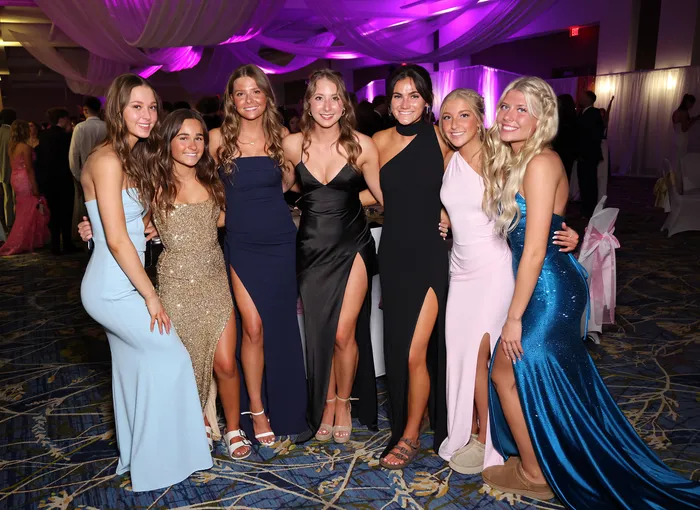Prom: Then vs. Now – Is It Still Worth the Hype?
Is prom still a big deal? It’s a question that sparks passionate debates in school hallways, family dinner tables, and parent Facebook groups across US, UK and other countries. For decades, prom has held an almost mythical status in American high school culture—the grand finale to the teenage years, complete with elaborate gowns, rented tuxedos, limousines, and the promise of a magical night that would be remembered forever.
The classic image of prom, immortalized in countless movies and passed down through generations, paints a picture of the ultimate high school experience. It’s the night when ordinary teenagers transform into princes and princesses, when the gymnasium becomes a ballroom, and when memories are made that supposedly last a lifetime.
But times have changed, and so has the conversation around prom. While some students still view it as the crown jewel of their high school experience—a essential rite of passage that marks their transition into adulthood—others see it as an outdated, expensive, and unnecessarily stressful event that doesn’t align with their values or interests.
This post will explore both sides of the prom debate, examining what this longstanding tradition means to students today. We’ll look at why prom continues to matter deeply to some, why others are walking away from it entirely, and how the modern prom experience has evolved to reflect changing social norms and priorities.
The Case For Prom: Why It’s Still a Big Deal
The Social Milestone
At its core, prom remains a significant social milestone—a formal, collective celebration that brings together an entire graduating class or grade level.
For many students, it represents the last time their class will gather as one unified group before they scatter to colleges, jobs, and different life paths. This communal aspect carries real emotional weight, that’s difficult to replicate in other settings.
It’s a democratic event where the star athlete, the theater kid, the class president, and the quiet artist all occupy the same dance floor, creating memories that transcend typical high school social hierarchies.
The “Hollywood” Experience
There’s something undeniably appealing about the glamour and transformation that prom offers. This transformation isn’t just about appearances; it’s about the psychological boost that comes from feeling your absolute best.
Many students describe prom night as the first time they’ve ever felt truly glamorous, and that confidence boost can be incredibly meaningful during a time of life when self-esteem often wavers. The red-carpet treatment, the professional photography, the formal dinner—it all contributes to an experience that feels genuinely special and adult.
Students get to experience what it feels like to be dressed to the nines, to feel truly elegant and sophisticated. The process itself—shopping for the perfect prom dress 2026 or tuxedo, getting hair and makeup done professionally, taking formal photos—creates an experience that feels worlds away from everyday teenage life.
Creating Lasting Memories
The emotional value of prom extends far beyond the night itself. For many, prom becomes a touchstone memory—a night that gets referenced and reminisced about for years to come.
The funny moments, the touching speeches, the surprising dance moves—these details become part of a shared history that former classmates bond over at reunions decades later.
These aren’t just individual memories; they’re collective ones that help define a class’s shared identity. The inside jokes, the moments of unexpected connection, the way someone surprised everyone on the dance floor—these stories become part of the group’s mythology, creating bonds that can last well beyond high school.
A Rite of Passage
For many students and their families, prom represents a crucial transition from childhood to young adulthood. It’s often the first formal event that feels truly grown-up—a chance to practice adult social skills in a structured, celebratory environment. Parents often view their child’s prom as a bittersweet milestone, a visible symbol that their teenager is preparing to enter the adult world.
This symbolic significance shouldn’t be underestimated. Prom, with its formal structure and celebratory atmosphere, provides a clear demarcation between the high school years and whatever comes next. For students who value tradition and ceremony, this symbolic aspect of prom can be deeply meaningful.

The Case Against Prom: Why The Hype Has Faded for Some
The Financial Burden
Perhaps the most significant criticism of modern prom culture is the staggering cost. What was once a relatively simple school dance has evolved into an elaborate production that can easily cost families thousands of dollars.
Between the dress or tuxedo, shoes, accessories, hair and makeup, tickets, dinner, transportation, and after-party expenses, the financial investment required for a single night can be overwhelming.
The pressure to spend has also escalated dramatically in recent years. Students from lower-income households may find themselves excluded from the full prom experience, unable to afford the dress, the dinner, or the limousine that seem to be standard expectations.
This financial barrier can turn what’s supposed to be a celebratory, inclusive event into a source of stress and social division.
The Pressure and Expectations
The modern prom experience comes loaded with expectations that can create significant stress and anxiety. Social media has amplified the pressure to create a “perfect” night, with students feeling obligated to document every moment and ensure their experience measures up to the carefully curated images they see online.
Finding a date has become its own source of stress, particularly as “promposal” culture has turned what was once a simple invitation into an elaborate performance. Students who might prefer to attend with friends or who are between relationships can feel excluded from an event that seems designed around couples. The pressure to have a romantic date can overshadow the social and celebratory aspects of the evening.
There’s also the weight of expectations around having the “perfect” night. Students often feel tremendous pressure to enjoy themselves, to look perfect in photos, and to create memories that will justify the time, money, and emotional investment that went into the event. This pressure can actually detract from the natural enjoyment of the evening, turning what should be a fun celebration into a performance.
Changing Social Norms
Today’s teenagers often have different social preferences and values than previous generations.
Many students find their deepest connections and most meaningful experiences in smaller, more intimate settings rather than large, formal events. The rise of alternative social activities—from escape rooms to hiking trips to gaming marathons—reflects a shift toward experiences that feel more authentic and personally meaningful.
For students who aren’t drawn to formal wear, dancing, or large group events, prom can feel like an obligation rather than a celebration, creating internal conflict about whether to participate in an event that doesn’t resonate with who they are.
This shift reflects broader changes in how young people approach social experiences. The structured nature of prom, with its formal protocols and time-honored traditions, can feel restrictive to students who value authenticity and self-expression.
The Rise of Alternatives
Rather than simply skipping prom altogether, many students are creating their own alternative celebrations that better reflect their values and interests.
These might include elaborate group dinners at favorite restaurants, weekend camping trips with close friends, themed house parties, or even anti-prom gatherings that celebrate the decision to opt out.
These alternative celebrations often cost significantly less than traditional prom while offering experiences that feel more personal and meaningful to the participants.
The beauty of these alternatives is their flexibility and authenticity. Students can design celebrations that truly reflect who they are and what they value, rather than trying to fit themselves into a pre-existing template. These events often create equally meaningful memories while avoiding many of the stresses and expenses associated with traditional prom.
Related Post: Beyond the Ballroom: Creative Prom Alternatives That Actually Sound Fun

The Modern Prom: New Trends and What It Looks Like Today
Prom-posals
One of the most significant developments in prom culture over the past decade has been the rise of “promposals”—elaborate invitations that can rival marriage proposals in their creativity and scope. These range from simple but thoughtful gestures to elaborate productions involving flash mobs, custom signs, or even social media campaigns.
While promposals can add an element of excitement and creativity to the prom experience, they’ve also introduced a new layer of pressure and expectation. Students now feel obligated not just to find a date, but to create a memorable, photo-worthy invitation. This can be particularly stressful for students who aren’t naturally inclined toward grand gestures or who lack the resources to create elaborate promposals.
On the positive side, promposals have democratized creativity and given students new ways to express their personalities and relationships. They’ve also created opportunities for friends to support each other and for the broader school community to celebrate these moments of connection. However, they’ve also contributed to the overall escalation of prom expectations and costs.
(Related Post: How Does A Girl Propose A Boy for Prom?)
The Role of Social Media
Social media platforms like Instagram and TikTok have fundamentally transformed the prom experience, creating both inspiration and pressure in equal measure.
Students now have access to endless prom ideas, from makeup tutorials to dress inspiration to promposal concepts, which can enhance their planning process and spark creativity.
However, social media has also created intense pressure to document and curate the perfect prom experience. Every moment—from getting ready to arriving at the venue to dancing—becomes an opportunity for content creation. This can detract from actually experiencing and enjoying the moment, as students become focused on capturing the perfect shot or story.
The comparison factor is also significant. Students can see elaborate prom experiences from around the world, creating unrealistic expectations about what their own prom should look like. This can lead to disappointment when reality doesn’t match the carefully edited and filtered images they see online.
Focus on Inclusivity
One of the most positive developments in modern prom culture has been a significant shift toward inclusivity. Many schools and students have worked to make prom more welcoming and accessible to all students, regardless of their family structure, sexual orientation, gender identity, or economic situation.
Students are increasingly attending prom with friends, in groups, or with same-sex partners, breaking away from the traditional heterosexual couple model. This has made prom more accessible to students who might not have romantic partners or who prefer to celebrate with their friend groups.
Many schools and communities have also developed programs to help make prom more affordable and accessible, including dress donation programs, discounted tickets for students facing financial hardship, and alternative transportation options. These efforts help ensure that economic barriers don’t prevent students from participating in the celebration.
Shift to “Experience Over Extravagance”
Perhaps most significantly, many students are shifting their focus from material extravagance to meaningful experiences. Rather than competing to have the most expensive dress or the most luxurious transportation, students are prioritizing fun with friends, genuine connection, and personal enjoyment.
This shift has led to more creative and personalized prom experiences. Students might choose to spend less on traditional prom elements in order to invest in experiences that matter more to them—whether that’s a special dinner with close friends, a unique photo shoot location, or a meaningful after-party activity.
Conclusion
So, is prom still a big deal? The answer, quite simply, is that it depends entirely on who you ask. For some students, prom remains a cherished tradition—a meaningful rite of passage that provides closure, celebration, and memories that last a lifetime. For others, it’s an outdated, expensive event that doesn’t align with their values or interests.
The “prom of today” is less about a single, perfect night that everyone experiences in exactly the same way and more about what individual students or friend groups want it to be. Some students are embracing traditional prom with enthusiasm, while others are creating alternative celebrations that better suit their personalities and values. Both approaches can create meaningful, memorable experiences.
Perhaps the most important development is that students now have more choice and agency in how they approach this milestone. They can participate in traditional prom, create their own alternatives, or skip the celebration entirely—all while feeling supported in their decision. This flexibility allows for a more authentic and personally meaningful experience, regardless of the specific form it takes.



